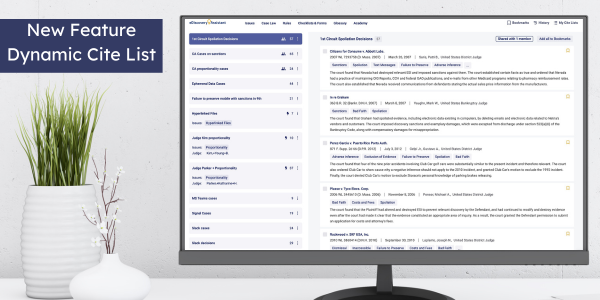The following is Part V in a multi-part series on how to draft and leverage an ESI protocol in any litigation. Part I of our series discussed the When, How and Why in planning for and creating your ESI protocol. Part II addressed the Key Components of an ESI Protocol, Part III walked through the Top 10 Situations You Can Avoid with a Protocol, and Part IV discussed Planning for the Production of Social Media.
In conjunction with this series, eDiscovery Assistant has created a new section in Checklists and Forms titled ESI Protocols that will include new content with each part of this series. That section includes sample ESI protocols, checklists on what to include and a list of metadata fields for inclusion in your protocol.
Manner of Production is an aspect of your ESI protocol that directly impacts how fast you’ll be able to get data loaded when you receive it.
Manner of Production is HOW you will receive the data from a production. It’s separate from Form of Production, i.e. the actual format of the various file types that make up a production, which we’ll cover in a future piece. Manner is how the total production will be physically transferred to the receiving party. Options include file sharing sites or providing physical media. You should NEVER email a production — any leak of data would mean that the hacker had access to your client’s entire document production.
Receiving productions of ESI is almost always fraught with complexity — simply trying to access the data, issues loading, corrupt data and other challenges increase the time it takes to get a production loaded. The reality is that it takes up to several hours or days to make a production available when it’s received depending on the size and types of the data produced.
Juxtapose the desire to have access to the data immediately with the reality that making a production available is never simple, and you have a recipe for disaster. The lawyers want to see data the minute it is produced; we give new meaning to the term fire drill when a production comes in and depositions are happening days later. We need it NOW. But the reality is that if you don’t tell the other side how you want data delivered, you are leaving it up to them and wasting a precious opportunity to get time back on viewing new productions.
If you’re nodding along with me, you know the pain of receiving data via SFTP (secure file transfer protocol, e.g. Sharefile) and having to wait hours for it to download, only to discover the data failed to download, files are corrupt, or other technical errors that can result and multiple harshly worded emails are exchanged. Worse yet are failed passwords to decrypt encrypted data, or when someone tries to download using outdated software like Internet Explorer (pro tip: stop doing that and use a different browser). Or when a hard drive arrives and no one has the encryption password because it was sent by letter or email to the lawyer and the project manager is trying to load it at 9pm and can’t reach the lawyer.
So, what can you do to avoid these issues and cut down on the time to load productions? Consider the types and volumes of data that you will receive in productions in a matter and include a section on Manner of Production in your ESI Protocol.
What does that mean? Here are some ideas on how to manage Manner of Production that you can incorporate into your ESI protocol as needed:
- Discuss the options for transmitting data with the producing party. Many organizations do not have high speed secure file transfer protocol (SFTP) options and resort to Sharefile or other standard tools. These off the shelf tools are designed for small amounts of data — once you start getting into 1GB of data or more, the speed to upload (when the production is complete) and then to download (when the production is received) takes hours on both sides. Consider signing up for your own high speed SFTP for purposes of the litigation, or use your provider’s if you are working with one. Then send an invitation to upload data to the producing party that will cut hours off the upload time, and you’ll receive an immediate message when the data is ready for download. One good option that we use is Media Shuttle. Time is money, and in the case of accessing your productions quickly, there is limited time. Get it back by using better technology to transfer data.
- Agree that volumes of data over a certain number of GB will be produced on physical media (i.e. hard drive) or via a shared portal that allows for fast downloads. This goes hand in hand with the first bullet above — if you are using a high speed SFTP option, you may not need this, but you need to understand the limits of the system you are working with and at what volume it starts to slow down. We will often provide that volumes over 20GB need to be produced on physical media (flash drive, hard drive, etc.) and sent overnight for delivery on the date the production is due. That is key, because many folks will finalize their production the date that it is due, and then overnight it. You lose a day that way. If your discovery schedule is compact and you need documents to prepare for depos, you’ll want to consider this in advance and plan for it.
- Know that the available upload and download speeds are affected by your wifi connection speed. If you are working remotely and trying to load a production to a file sharing site, but your wifi is slower than Sid the Sloth, it will take forever to upload. Consider using an ethernet cable to connect directly rather than using Wifi.
- Make sure that your Form of Production is well documented in your ESI protocol so that you can prioritize your data loading. Less voluminous or problematic data can be loaded separately, meaning that lawyers can get their hands on emails and other unstructured data faster. For example, audio and video files, as well as large images take much longer to load. Similarly, you can load metadata for records and have those available for sorting before the complete catalog of images or other large files might be ready. Lawyers can then tag data that needs to be considered just based on metadata searches.
- Document the exchange of passwords for accessing data if they are exchanged — how it will happen, who it will be sent to, etc. Then ensure that leading up to a production date, those parameters still hold. If a lawyer will be on vacation, you need to plan for someone else to send/receive information.
- Avoid sending passwords in the same email as the production link.
- Ensure the production link expires after a number of days (usually 3-7 days), or advise opposing counsel that you will remove access once you get notice of a successful download from a shared service. Note that case law has held that lawyers who make links available publicly (even in emails) have waived privilege.
Manner of Production is often overlooked in ESI protocols. But it can be an important tool in managing the timing of productions and getting access to the data you need, as well as protecting access to your client’s data after exchange. Think through what you will need for your case and plan accordingly.
In Part VI of this series we talk about asking for metadata in your ESI protocol.



